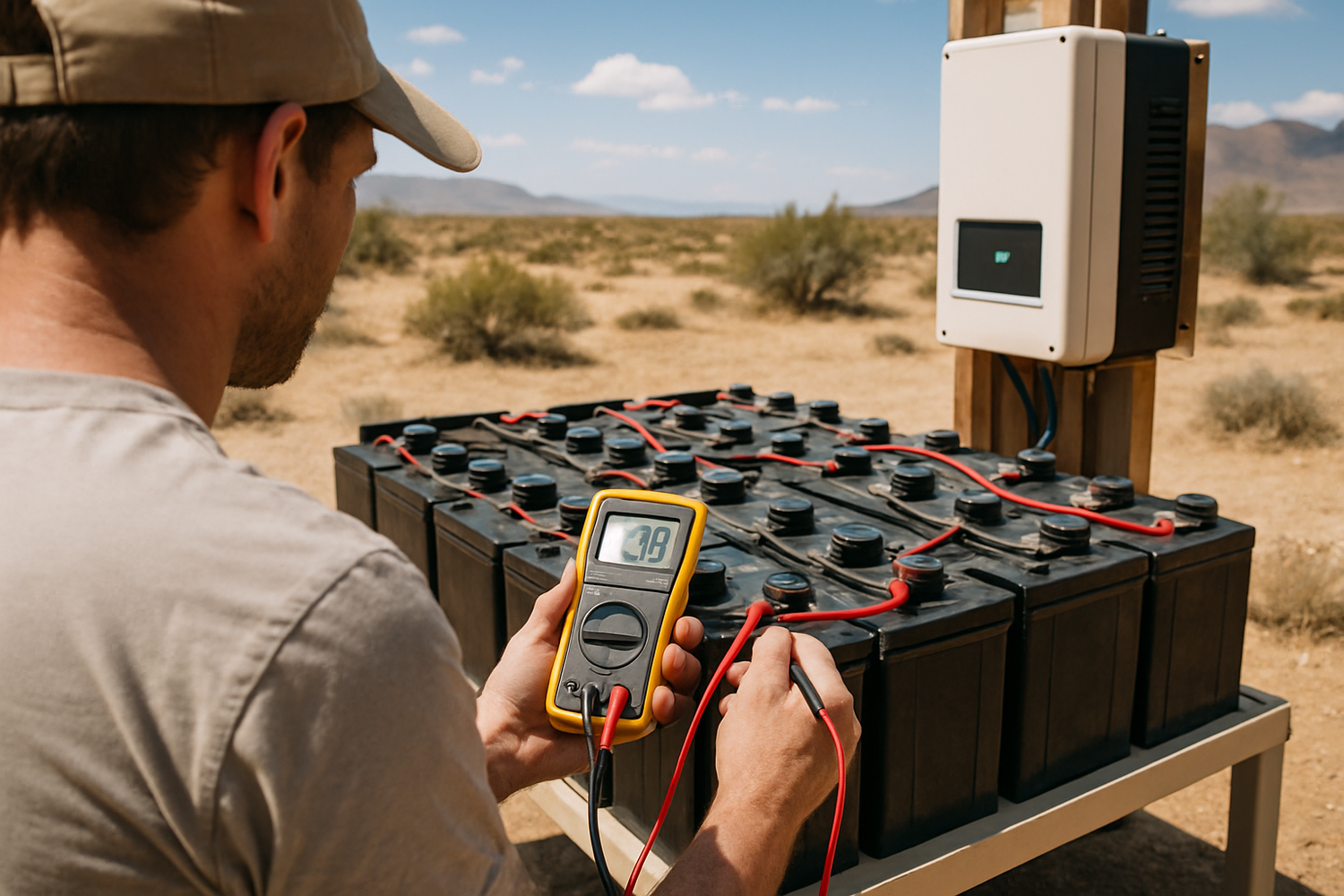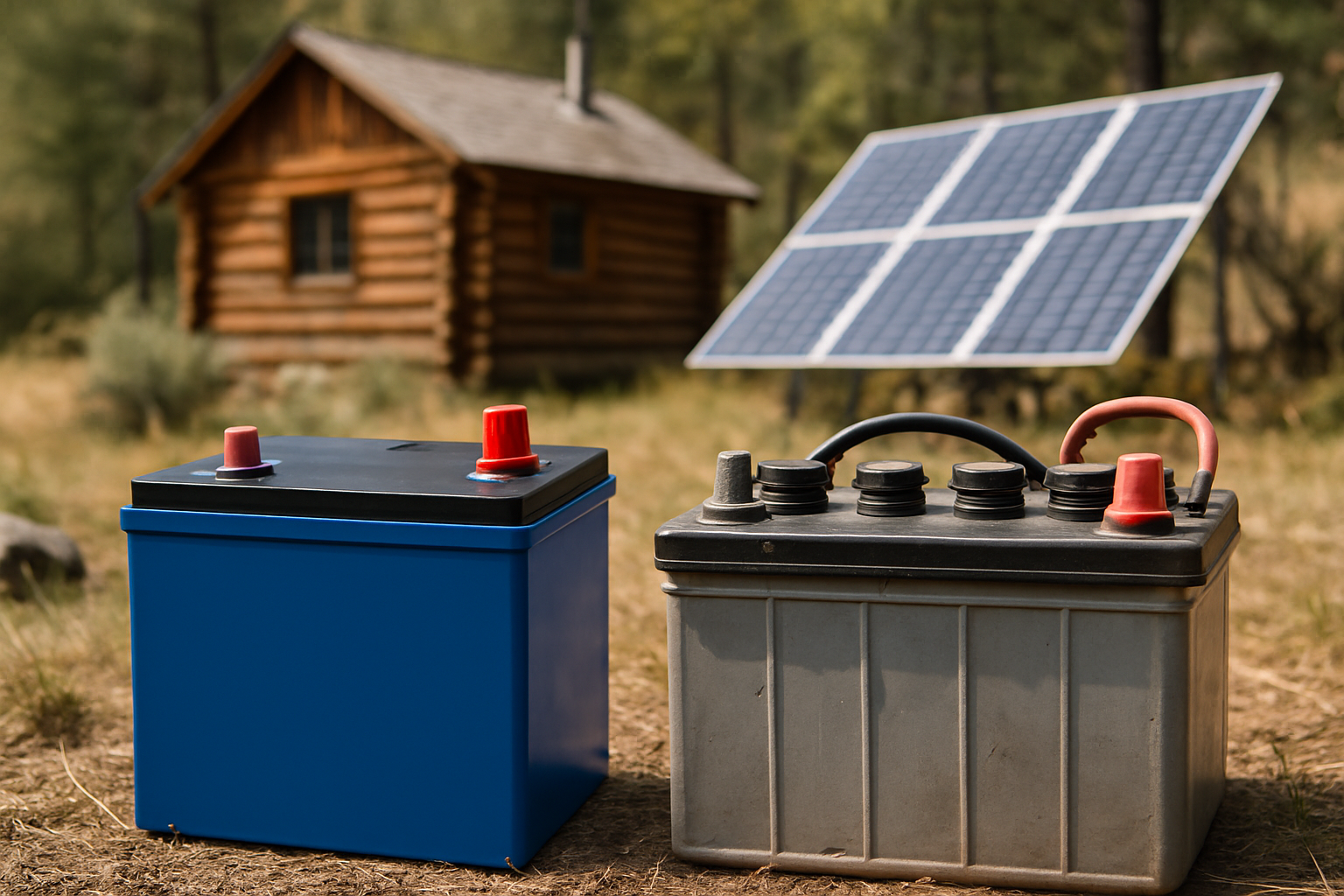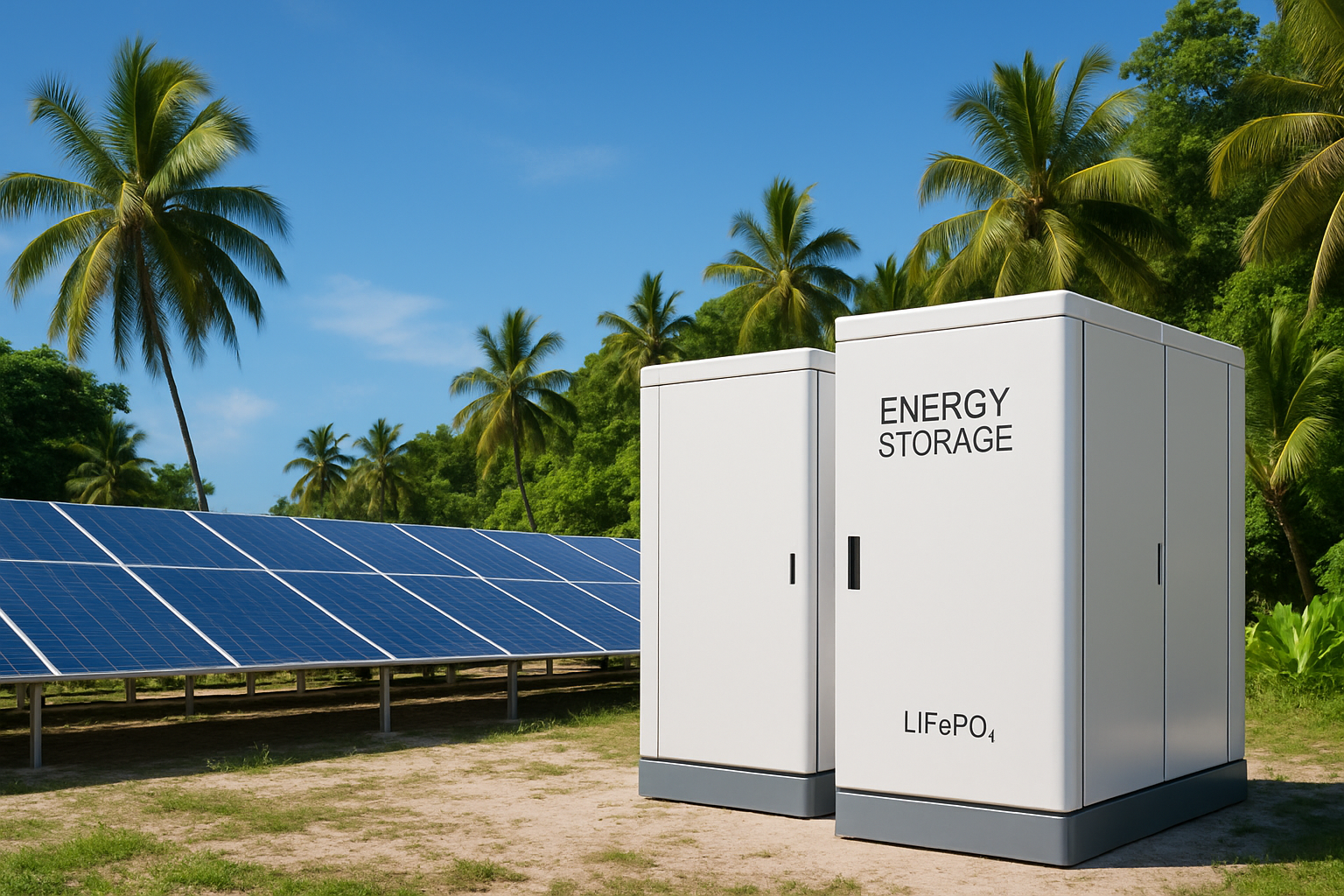Operating an off-grid solar and energy storage system offers incredible freedom and resilience. However, a common concern for many users is the unexpected scenario of an off-grid battery reaching 0% State of Charge (SOC). This situation can lead to system shutdown and potential damage to your valuable energy storage assets. This article provides practical guidance on how to respond when your off-grid battery hits zero SOC, offering steps to recover and strategies to avoid this critical state.

Understanding 0% State of Charge in Off-Grid Batteries
The State of Charge (SOC) indicates the current capacity of a battery relative to its maximum capacity, often expressed as a percentage. A 0% SOC signifies a fully discharged battery. While some battery chemistries tolerate deep discharge better than others, consistently reaching 0% SOC can significantly impact battery health and lifespan.
The Risks of Deep Discharge
Deep discharge, especially to 0% SOC, can cause irreversible damage to many battery types. For lead-acid batteries, it can lead to sulfation, where lead sulfate crystals harden on the plates, reducing capacity and internal resistance. For lithium-ion chemistries, particularly LiFePO4 batteries, while more robust, repeated deep discharge can still stress the cells, potentially leading to reduced cycle life or even safety concerns if not managed correctly. The depth of discharge (DoD) is the percentage to which a battery can be discharged compared to its full capacity.
Battery Chemistry and 0% SOC
Different battery chemistries react uniquely to deep discharge. LiFePO4 batteries are known for their high performance, safety, and reliability, making them a popular choice for off-grid systems. These batteries typically have a built-in Battery Management System (BMS) that protects them from over-discharge by disconnecting loads before they reach a truly damaging voltage. However, if the BMS fails or the battery remains in a deeply discharged state for an extended period, even LiFePO4 cells can suffer. Understanding your specific battery's characteristics is crucial for effective management.
Immediate Actions When SOC Hits Zero
When your off-grid battery system indicates 0% SOC, prompt action is vital to prevent further damage and restore functionality.
Disconnect Loads Immediately
The first and most critical step is to disconnect all loads from the battery. Continuing to draw power from a deeply discharged battery can cause further voltage drop, potentially pushing cells below their minimum safe operating voltage. This can lead to permanent damage and make recovery more difficult, or even impossible. Turn off your inverter, charge controller, and any directly connected DC loads.
Assess Battery Health and Voltage
After disconnecting loads, use a multimeter to measure the voltage of your battery bank. For a 12V LiFePO4 battery, a healthy fully charged voltage is typically around 13.4V to 13.6V. At 0% SOC, the voltage will be significantly lower, but it should not be at absolute zero. If the voltage is extremely low (e.g., below 10V for a 12V LiFePO4 battery), the battery may have entered a protective mode or sustained damage. Consult your battery's specifications to understand its minimum safe voltage threshold. Monitoring parameters such as the health of EV batteries and potential reduced battery lifetimes is important.
Recharging Strategies for Depleted Batteries
Once you have disconnected loads and assessed the battery's voltage, you can proceed with a controlled recharging process. This process requires caution and proper equipment.
Controlled Recharging with Low Current
A deeply discharged battery, especially a LiFePO4 battery protected by its BMS, may not immediately accept a high charging current. Attempting to force a high current can trigger the BMS to remain disconnected or even cause a fault. Instead, use a charge controller or a dedicated battery charger capable of a 'pre-charge' or 'recovery' mode, which applies a very low current to slowly raise the battery voltage to a safe level. For LiFePO4 batteries, a small trickle charge (e.g., 0.05C to 0.1C) can help wake up the BMS and allow it to begin accepting a normal charge. For example, a 100Ah battery would receive 5-10 Amps. The cycling rate (C-rate) refers to the rate of charge or discharge.
Monitoring During Recharge
Throughout the recharging process, close monitoring is essential. Observe the battery voltage, temperature, and any error indicators on your charge controller or inverter. Ensure the battery does not overheat or show signs of swelling. If the battery does not begin to accept a charge after a reasonable period (e.g., a few hours at low current), or if it exhibits unusual behavior, discontinue charging and consult a qualified technician or the battery manufacturer. Modern off-grid systems, particularly mini-grids, have a decade-long track record of reliable operations in some of the most remote and environmentally demanding conditions.
Preventing Future 0% SOC Events
Proactive measures are the best way to avoid the stress and potential damage associated with a 0% SOC event.
Proper Sizing and System Design
Ensure your off-grid system is adequately sized for your energy consumption. An undersized battery bank or solar array can lead to frequent deep discharges. Consider your peak and average daily loads, as well as periods of low solar irradiance (e.g., cloudy days or winter months). A well-designed system provides sufficient capacity to meet demand, even with some reserve. Implementing more storage capacity in mini-grids can significantly reduce fossil fuel consumption and increase the share of variable renewable energy, aiding the transition to 100% renewable electricity generation in off-grid areas.
Regular Monitoring and Alarms
Implement a robust monitoring system for your off-grid batteries. Many modern charge controllers and inverters offer remote monitoring capabilities, allowing you to track SOC, voltage, current, and temperature. Set up low-voltage alarms to alert you before the battery reaches a critical discharge level. Regular checks of your battery's State of Charge (SoC) are crucial for maintaining its health.
Backup Power Solutions
Consider integrating backup power sources into your off-grid system. A reliable generator, for instance, can provide supplementary charging during extended periods of low solar production or unexpectedly high energy demand. This ensures your batteries do not deplete completely, offering a safety net for your energy independence. Our company focuses on integrated ESS development, combining lithium batteries, hybrid inverters, and solar panels to provide reliable and scalable energy solutions.
Safeguarding Your Energy Independence
Managing off-grid batteries, especially when faced with a 0% SOC situation, requires both immediate action and a commitment to preventive maintenance. By understanding the risks of deep discharge, taking swift corrective measures, and implementing robust system design and monitoring, you can significantly prolong the life of your batteries and ensure a reliable energy supply. Our advanced LiFePO4 batteries and comprehensive off-grid solar solutions are designed to support your journey towards complete energy independence, offering performance and peace of mind.
Frequently Asked Questions
What is the ideal State of Charge (SOC) for an off-grid battery?
For most off-grid battery chemistries, maintaining an SOC between 20% and 90% is ideal for maximizing lifespan. Avoiding consistent full discharge (0% SOC) and full charge (100% SOC) can help extend the battery's cycle life. For LiFePO4 batteries, a typical operational range might be 10% to 95%.
Can a battery truly reach 0% SOC without being damaged?
Modern LiFePO4 batteries often have a Battery Management System (BMS) that disconnects the battery from loads before it reaches a critically low voltage, effectively preventing a 'true' 0% SOC that would cause irreversible damage. However, if the battery remains in this disconnected, low-voltage state for an extended period, or if the BMS fails, damage can still occur.
How often should I monitor my off-grid battery's SOC?
For critical off-grid systems, daily monitoring is recommended. Many systems offer remote monitoring apps that provide real-time data. Setting up automated alerts for low SOC levels can provide an early warning, allowing you to take action before the battery reaches a critical state.
Is it safe to jump-start a deeply discharged LiFePO4 battery?
Attempting to 'jump-start' a deeply discharged LiFePO4 battery with a high-current source can be dangerous and is generally not recommended. It can bypass the BMS's protective features and potentially cause cell damage or thermal runaway. Always use a dedicated charger with a low-current recovery mode designed for your battery type.
What role does a solar inverter play in preventing 0% SOC?
A solar inverter converts DC power from your batteries and solar panels into AC power for your home. Many hybrid inverters include integrated charge controllers that manage the charging and discharging of batteries. They often have low-voltage disconnect settings that can shut down loads to protect the battery from deep discharge, acting as a crucial safeguard against reaching 0% SOC.





Leave a comment
All comments are moderated before being published.
This site is protected by hCaptcha and the hCaptcha Privacy Policy and Terms of Service apply.